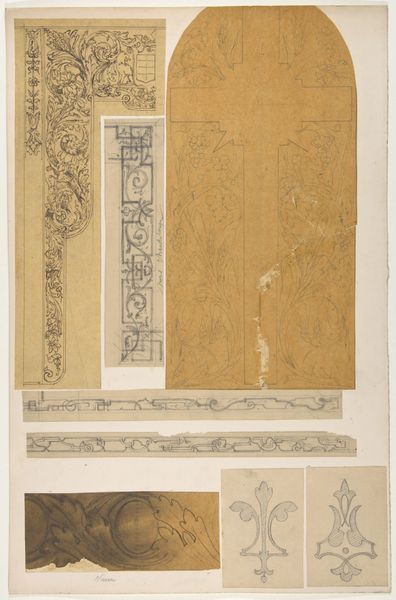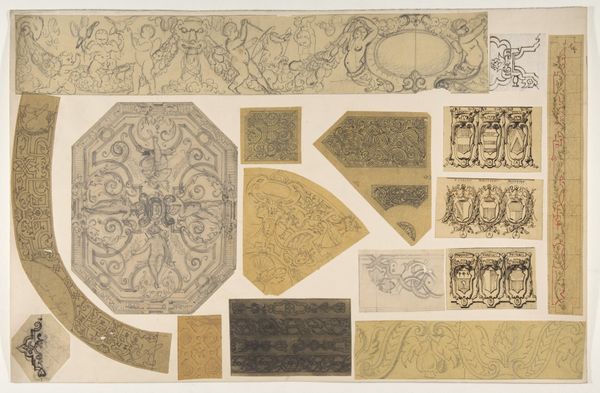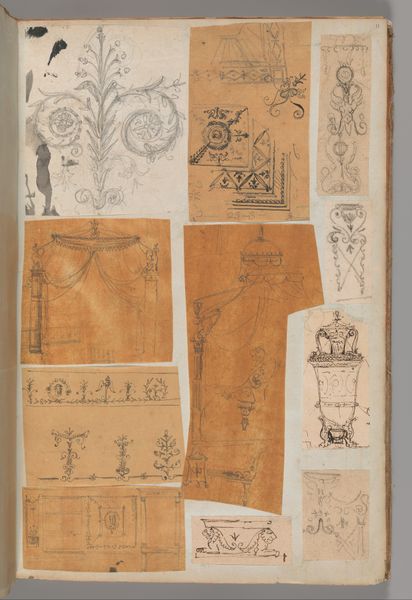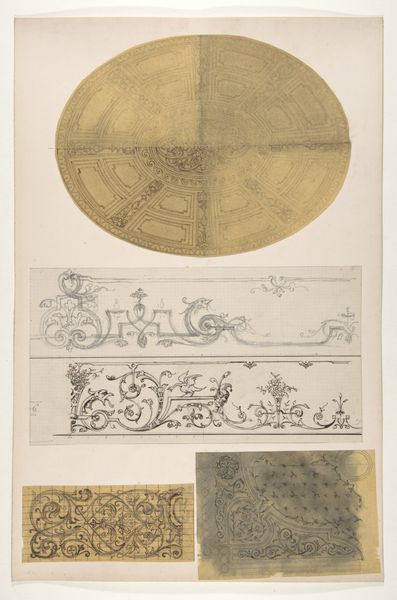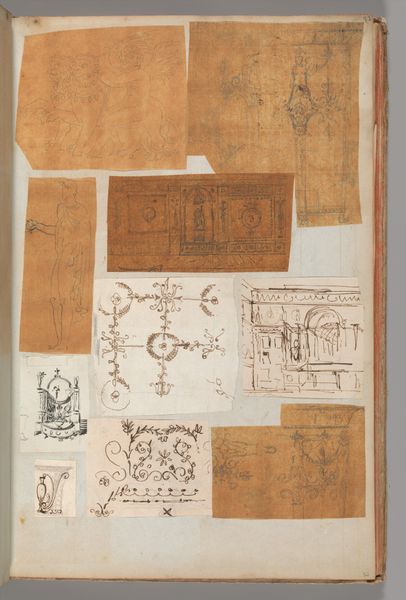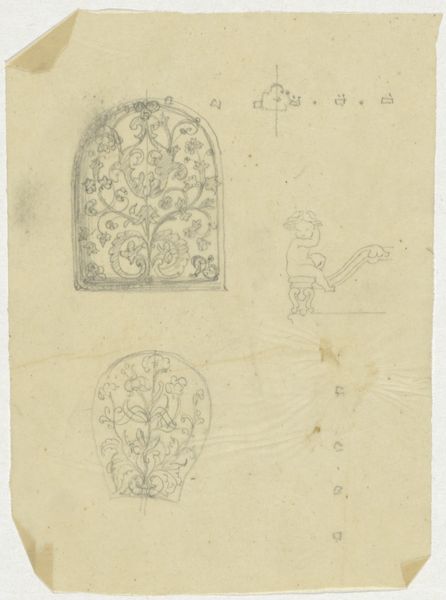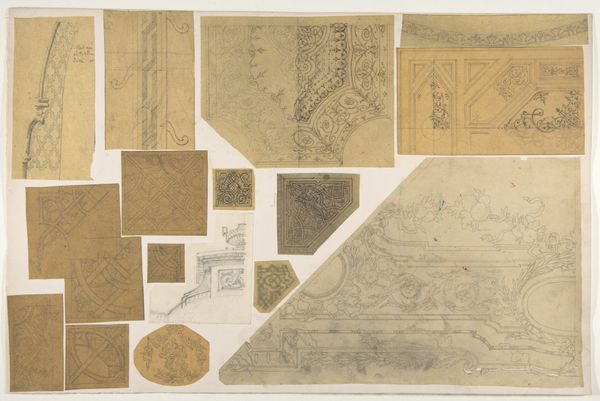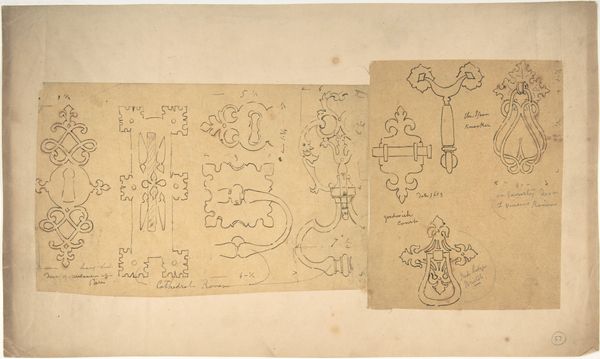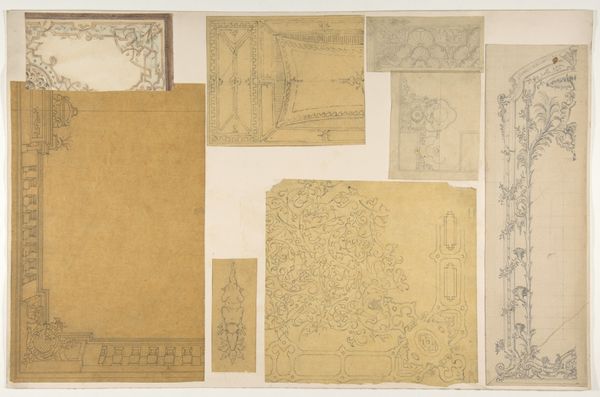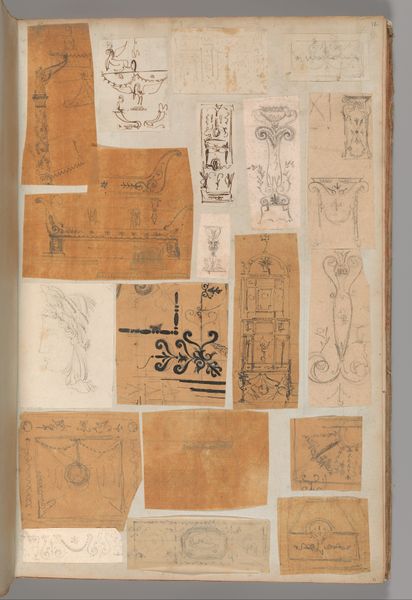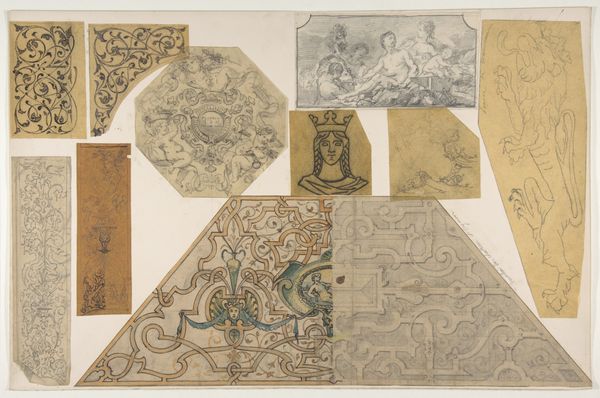
Seven Miscellaneous Designs for the de la Rochejaquelein Family 1850 - 1900
0:00
0:00
drawing, ornament, print, pencil
#
drawing
#
ornament
# print
#
pencil
#
history-painting
Dimensions: 12 1/4 x 18 3/4 in. (31.1 x 47.6 cm)
Copyright: Public Domain
Editor: This drawing, "Seven Miscellaneous Designs for the de la Rochejaquelein Family," dates from 1850 to 1900 and is by Jules-Edmond-Charles Lachaise. It’s a pencil drawing, a collection of ornamental and heraldic designs, it seems. I’m struck by how it feels both very detailed and kind of unfinished, like sketches towards something larger. What do you see in this piece? Curator: I see a potent reflection of the 19th century’s fascination with history, particularly the aristocracy, rendered here through the lens of design. Consider the de la Rochejaquelein family: staunch royalists during the French Revolution. These designs evoke that history. The work’s incompleteness invites us to reflect on how history is never truly finished, but rather constantly re-imagined and re-presented. How might we interpret the heraldry, the symbols of power and lineage, in the context of post-revolutionary France? Editor: That’s interesting – the family’s royalist stance. So these drawings aren’t just decorative, but also function as a kind of… statement? Is the act of preserving these symbols in itself a political act? Curator: Exactly! And who is Lachaise in relation to all this? What’s his intent in depicting these images? Think about the resurgence of interest in aristocratic imagery after periods of upheaval. It's more than mere decoration. It's about constructing and reinforcing power narratives. What sociopolitical tensions might have fueled such a revival? Editor: I guess it’s about reclaiming a past that was almost erased, solidifying identity after revolution. That changes how I see it; it's more deliberate, more charged. I came into this just noticing an aesthetic quality, now I see this deliberate reconstruction of heritage. Curator: Precisely. Seeing this as a window into 19th-century anxieties and aspirations provides a richer appreciation, wouldn’t you say? Editor: Definitely! Thanks, that’s given me so much more to think about.
Comments
No comments
Be the first to comment and join the conversation on the ultimate creative platform.
